Abstract
Oral hygiene products play a crucial role in maintaining dental health and preventing oral diseases such as cavities, gum disease, and bad breath. These products, which include toothpaste, mouthwashes, floss, and chewing gum, have evolved over centuries, with the incorporation of both modern and traditional ingredients. Recently, there has been increasing interest in Ayurvedic remedies and natural ingredients for oral care. Dikamali, A herbal substance with origins in traditional Indian medicine, has gained attention for its potential in alleviating teething discomfort in children and its broader applications in oral hygiene products. This report explores the various types of oral hygiene products, their production, and uses, focusing on the introduction, extraction, and benefits of Dikamali. Special emphasis is placed on how Dikamali can be integrated into oral care formulations to enhance therapeutic benefits, with potential for further modification to improve its efficacy in promoting long-term dental health.
Keywords
Toothbrush, Toothpaste, Mouthwash, Herbal Dikamali, Dikamali benefits Traditional Dikamali.
Introduction
Good oral hygiene is crucial for overall health, as poor oral care is linked to issues like heart disease, diabetes, and respiratory infections. Throughout history, oral hygiene has been integral to daily life across cultures. Ancient tools such as neem twigs, salt, and herbs were used for cleaning teeth, while Egyptians developed an early toothpaste from crushed eggshells and pumice. With advances in dentistry and understanding bacterial roles in decay, oral care has evolved from basic cleaning to routines addressing diverse needs like cavity prevention and gum care. Despite these advancements, dental caries and gum disease remain global challenges, exacerbated by high-sugar diets and poor habits. The rise of processed and sugary foods increases plaque and acid production, leading to enamel erosion and cavities. While modern products like toothpaste and mouthwash have made oral care easier, effective oral hygiene remains complex. Ongoing research focuses on creating products that clean, protect, and strengthen teeth, meeting the growing demands for innovative oral care solutions.
METHODS AND MATERIALS

Figure 1: Types
Types Of Oral Hygiene Products
TOOTHPASTES: Toothpaste has been a key part of oral hygiene for centuries, evolving from ancient Egyptian mixtures to modern formulations. Today, toothpaste is categorized into types like fluoride, whitening, and desensitizing. Fluoride toothpaste strengthens enamel and prevents cavities, whitening toothpaste removes stains for a brighter smile, and desensitizing toothpaste relieves tooth sensitivity by blocking pain signals. Toothpaste contains active ingredients, like fluoride, for therapeutic benefits, and inactive ones, like flavorings and thickeners, for texture and taste. With growing interest in natural options, many consumers now opt for herbal or organic toothpastes that avoid synthetic additives, catering to those seeking holistic dental care.
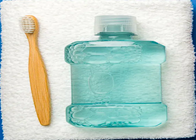
Figure 2: Mouth Wash

Figure 3: Toothpaste
Mouthwashes: Mouthwashes are an important addition to oral hygiene, complementing brushing and flossing by reaching hard-to-clean areas. They are categorized as therapeutic, addressing issues like plaque, gingivitis, and bad breath, or cosmetic, which mainly freshen breath. Therapeutic mouthwashes often include ingredients like chlorhexidine for bacteria control and essential oils with antibacterial properties. Common components include antiseptics, anti-inflammatory agents, and alcohol, though alcohol-free options are available for those with sensitivity concerns. Specialized mouthwashes for dry mouth or sensitivity highlight the industry's response to diverse needs, providing extra protection for maintaining oral health.
Dental Floss
Dental floss is essential for cleaning areas that toothbrushes can’t reach, such as between teeth and along the gum line. Options include waxed floss for tight spaces, unwaxed for better debris removal, flavored varieties to encourage use, and tape for wider gaps. Materials like nylon and Teflon offer different benefits, with nylon being effective but prone to shredding and Teflon gliding smoothly. Flossing helps prevent plaque buildup, gum disease, cavities, and bad breath by disrupting bacteria between teeth. Proper technique is key to avoiding injury and ensuring thorough cleaning, making daily flossing crucial for oral health.

Figure 4: Dental Floss
Toothbrush: A toothbrush is a basic tool that is critical for maintaining oral hygiene by removing plaque and food particles from the surface of the teeth. Toothbrushes come in various types, including manual and electric. Choosing the right type of toothbrush depends on individual preferences and oral health needs. It is recommended to brush teeth twice daily with a soft-bristled toothbrush to maintain healthy teeth and gums.
Related Products:
- Electric Toothbrush: Uses oscillating or vibrating movements to clean teeth more effectively, providing a deeper clean.
- Interdental Brushes: Designed to clean between teeth where toothbrush bristles cannot reach, helping to prevent gum disease.
- Tongue Cleaner: A tool used to clean the surface of the tongue, removing bacteria and helping to prevent bad breath

Figure 5: Tooth Brushes Production And Uses Of Oral Hygiene Products
Manufacturing Processes: The production of oral hygiene products like toothpaste and mouthwash involves multiple steps to ensure quality and safety. Toothpaste is made by mixing abrasives (e.g., silica), humectants (e.g., glycerin), binders, and active ingredients like fluoride in high-shear mixers. Flavors and colors are added before cooling and packaging. Mouthwash production starts with dissolving active ingredients like chlorhexidine in water, followed by alcohol and flavoring, with thorough quality control before bottling. Ingredient formulation is key to effectiveness and stability. Innovations like controlled-release systems enhance fluoride delivery, while stabilizers and preservatives protect product efficacy. Compatibility testing ensures ingredients work together, maintaining quality throughout shelf life.
Usage And Consumer Preference:
Usage of oral hygiene products varies by age, culture, and economic status. Younger users prefer flavored options, while older adults focus on sensitivity and gum health. Increased awareness has led to broader routines, including floss, mouthwash, and tongue cleaners. There is rising demand for natural products with plant-based ingredients, eco-friendly packaging, and cruelty-free testing. Innovations like smart toothbrushes offering personalized care and refillable packaging reflect consumer preferences for sustainability and technology. These trends underscore the need for ongoing innovation to meet evolving oral health demands.
Introduction To Dikamali
Review Of Dikamali As Oral Hygiene Product
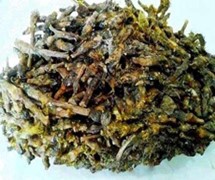
Figure 6: Dikamali
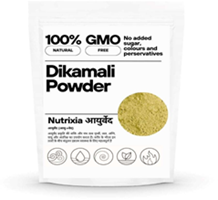
Figure 7: Dikamali Powder
Origin And Historical Significance: Dikamali (Gardenia gummifera) is a perennial shrub from the Rubiaceae family, known for its therapeutic properties in traditional medicine, particularly in Ayurveda. It has been used for centuries to treat various ailments, especially those related to oral health. In Ayurveda, its resin is valued for soothing inflammation and pain, making it especially helpful for teething infants. Dikamali's use in remedies for teething discomfort, like swelling and irritability, reflects Ayurveda's emphasis on natural healing. This plant also holds cultural significance, as it is woven into family traditions and rituals, passed down through generations.
Geographical Sources & Cultural Importance: Dikamali (Gardenia gummifera) is found in tropical and subtropical regions, particularly in India and Sri Lanka, thriving in forested and scrubland areas. It grows in well-drained soils and is often collected by making incisions in the bark to extract its resin, usually during peak production seasons. Different varieties of Dikamali vary based on soil, climate, and location, enriching Ayurvedic practices with region-specific properties. Culturally, Dikamali plays a key role in Ayurvedic medicine, especially for soothing teething discomfort in infants. It is cherished as a natural remedy in Indian households, symbolizing the connection between nature and health. Often used in Ayurvedic powders and pastes for oral health, Dikamali is part of rituals that blend practical care with spiritual practices, representing the wisdom and traditions of Ayurveda.
Formulation Of [100gm] Dikamali Toothpaste:
Table 1: Formulation Of [100gm] Dikamali Toothpaste
|
Component
|
Ingredient
|
Function
|
Percentage
|
Weight (for 100g)
|
|
Active Ingredients
|
Dikamali Powder
|
Traditional active agent
|
1%
|
1g
|
|
|
Neem Extract
|
Antimicrobial and soothing
|
0.5%
|
0.5g
|
|
|
Tulsi Extract
|
Antibacterial, antioxidant
|
0.5%
|
0.5g
|
|
|
Clove Oil
|
Flavor and antimicrobial
|
0.2%
|
0.2g
|
|
|
Hydroxyapatite
|
Enamel remineralization
|
1%
|
1g
|
|
Base Ingredients
|
Calcium Carbonate
|
Abrasive
|
30%
|
30g
|
|
|
Glycerin
|
Humectant
|
25%
|
25g
|
|
|
Sorbitol
|
Humectant and sweetener
|
20%
|
20g
|
|
|
Xanthan Gum
|
Thickener
|
1%
|
1g
|
|
|
Sodium Cocoyl Glutamate
|
Mild surfactant
|
1.5%
|
1.5g
|
|
|
Stevia
|
Natural sweetener
|
0.1%
|
0.1g
|
|
Flavoring & Freshness Components
|
Peppermint Oil
|
Flavor, freshness
|
0.5%
|
0.5g
|
|
|
Tea Tree Oil
|
Antimicrobial, freshness
|
0.2%
|
0.2g
|
|
Preservative & pH Adjuster
|
Citric Acid
|
pH adjustment
|
Adjust as needed
|
-
|
|
|
Rosemary Extract
|
Natural preservative
|
0.1%
|
0.1g
|
|
|
Deionized Water
|
Base solvent
|
19%
|
19g
|
Active Components Of Dikamali

Figure 8: Phytoconsituent
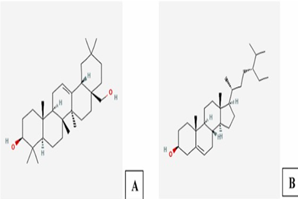
Figure 9: Compounds
PHYTOCHEMICAL PROFILE: Dikamali (Gardenia gummifera) contains key phytochemicals such as diterpenoids, triterpenoids, flavonoids, and phenolic compounds, which contribute to its therapeutic properties. Diterpenoids, like gummiferol, offer antimicrobial and anti-inflammatory effects, helping to treat conditions like gingivitis and periodontal disease. Triterpenoids promote oral health by reducing plaque and supporting hygiene. The plant’s flavonoids and phenolic compounds provide antioxidant benefits, protecting oral tissues from oxidative stress. Together, these compounds make Dikamali a promising ingredient for developing oral care products focused on gum health and preventing dental issues.
PHARMACOLOGICAL PROPERTIES
Dikamali's active components, including diterpenoids, triterpenoids, and flavonoids, possess antibacterial, antifungal, and anti-inflammatory properties, making it effective in oral care. These compounds inhibit oral pathogens like Streptococcus mutans and Porphyromonas gingivalis, which contribute to dental caries and gum disease. Dikamali also combats oral candidiasis and reduces gum inflammation, helping prevent and manage periodontal diseases. Its antimicrobial and anti-inflammatory effects support overall oral health, highlighting the potential of plant-based remedies in modern dental care.

Figure 10: Properties
USES OF DIKAMALI IN ORAL HYGIENE
TRADITIONAL USES: Dikamali (Gardenia gummifera) has long been used in traditional medicine, especially in Ayurveda, for its analgesic, antimicrobial, and anti-inflammatory properties. It is commonly applied to soothe teething pain in children and treat oral infections like gingivitis, ulcers, and candidiasis. The plant’s natural remedies have been valued for promoting gum health and healing inflammation.
INCORPORATION INTO MODERN ORAL CARE: In modern oral care, Dikamali is gaining popularity in toothpaste, mouthwashes, and herbal products due to its antibacterial and anti-inflammatory benefits. As interest in natural oral care grows, products featuring Dikamali offer a holistic, plant-based alternative to conventional solutions, integrating traditional wisdom into contemporary formulations.
SAFETY AND EFFICACY: The safety and effectiveness of Dikamali (Gardenia gummifera) in oral hygiene have been increasingly studied. Research confirms its antibacterial properties against common oral pathogens, supporting its traditional use for oral infections. Studies also show that Dikamali's anti-inflammatory effects help reduce gum inflammation, which is vital in managing periodontal disease.
Dikamali is generally considered safe for use in oral care products when used at appropriate concentrations, though individual responses may vary. Ongoing research will help further understand its safety and efficacy. Combining traditional wisdom with modern science, Dikamali offers natural and effective alternatives for maintaining dental health.
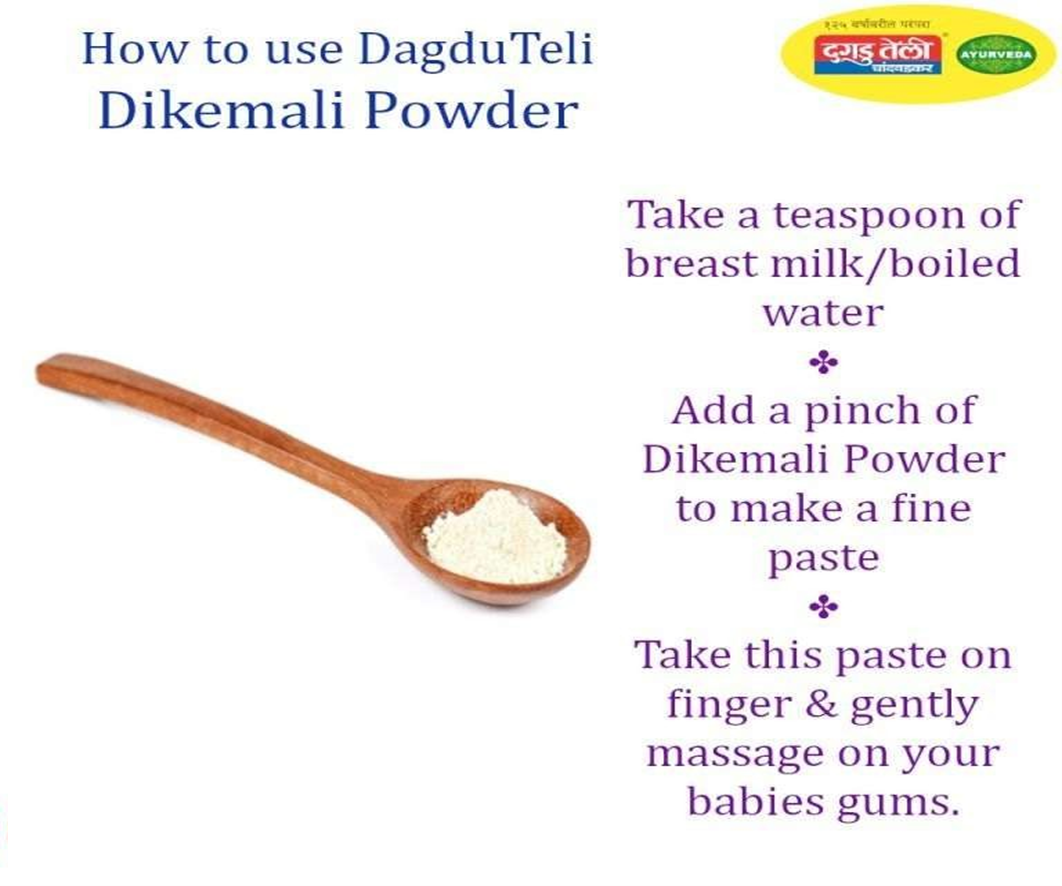
Fig 11 Uses
Potential Modifications To Enhance Dikamali’s Benefits
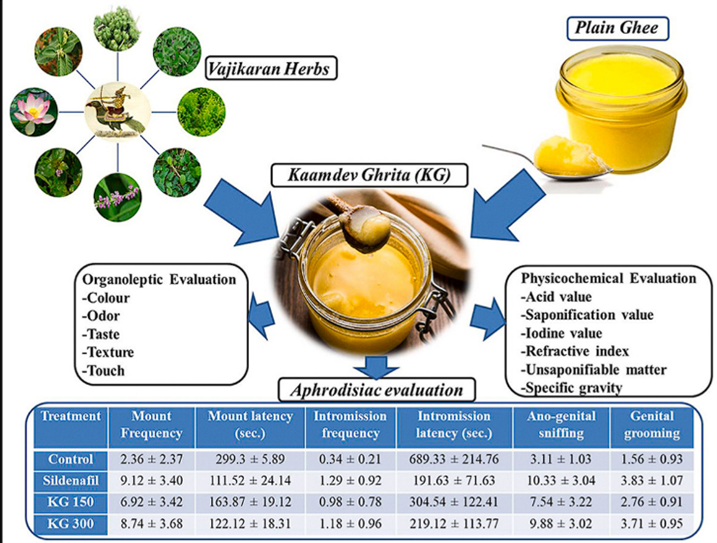
Fig 12
BIOAVAILABILITY ENHANCEMENTS: To maximize the therapeutic potential of Dikamali (Gardenia gummifera), enhancing the bioavailability of its active compounds is crucial. Bioavailability refers to the degree and rate at which active substances are absorbed into the bloodstream and made available for use by the body. Several strategies can be employed to increase the bioavailability of Dikamali's key phytochemicals, such as diterpenoids and triterpenoids.
Synergistic Combinations: Enhancing Dikamali's Therapeutic Potential Through Chemical And Herbal Blends: Combining Dikamali (Gardenia gummifera) with other natural herbs or chemicals can lead to various beneficial reactions and enhancements in its therapeutic properties, particularly for oral health. Here are some examples of potential combinations and their expected outcomes:
Dikamali And Neem (Azadirachta Indica):
- Composition: Neem contains azadirachtin, nimbidin, and flavonoids with antibacterial, anti-inflammatory, and antifungal properties.
- Expected Effects: Synergistic antimicrobial action against oral pathogens and enhanced anti-inflammatory benefits for soothing gums.
Dikamali And Turmeric (Curcuma Longa):
- Composition: Turmeric's curcumin offers strong anti-inflammatory and antioxidant properties.
- Expected Effects: Increased anti-inflammatory benefits and enhanced oral tissue health through antioxidants.
Dikamali And Clove Oil (Syzygium Aromaticum):
- Composition: Clove oil contains eugenol with analgesic and antimicrobial effects.
- Expected Effects: Enhanced pain relief and antimicrobial protection for oral infections and teething pain.
Dikamali And Honey (Apis Mellifera):
- Composition: Honey’s antibacterial properties promote wound healing.
- Expected Effects: Potent antibacterial action for oral infections and improved taste for better palatability.
Dikamali And Cinnamon (Cinnamomum Verum):
- Composition: Cinnamon's cinnamaldehyde has antibacterial and anti-inflammatory properties.
- Expected Effects: Broad antimicrobial protection and improved flavor for oral hygiene products.
Brand Value Of Dikamali: Dikamali holds significant value due to its historical and cultural relevance in traditional medicine, especially Ayurveda. Its reputation as a natural remedy for oral health, teething pain, and gum diseases enhances its credibility. Products incorporating Dikamali can be marketed as premium, natural alternatives, leveraging the increasing consumer preference for holistic health solutions. Brands promoting Dikamali can gain authenticity by emphasizing its Ayurvedic origins and therapeutic benefits. Collaborations with well-established herbal brands or endorsements from health professionals can further elevate its market position.
Market Value Of Dikamali: The global demand for herbal and natural products is fueling the market for Dikamali-based oral care solutions. With the oral care industry valued at approximately $38 billion in 2021 and expected to grow steadily, Dikamali represents a niche yet promising segment. Its integration into herbal toothpaste, mouthwash, and other oral hygiene products aligns with consumer trends favoring sustainable, plant-based ingredients. As the Ayurvedic and herbal markets grow globally, Dikamali’s application in innovative products can tap into this expanding opportunities.
Challenges And Opportunities Challenges: One challenge in the market is the lack of extensive clinical studies supporting the efficacy of Dikamali in oral care. Brands may face hurdles in convincing consumers without sufficient scientific backing. Additionally, competition from well-established synthetic oral care products could impact market share.
Opportunities: There are significant opportunities to innovate and create new products that cater to consumer preferences for natural ingredients. Expanding product lines to include toothpaste, mouthwashes, and dietary supplements featuring Dikamali can tap into the growing market for herbal health products.
Some Natural Herbs Which Acts Like Dikamali
Miswak (Salvadora Persica): A traditional chewing stick with antibacterial properties, effective in plaque removal, breath freshening, and widely recognized in Islamic culture for oral hygiene.

Figure 13: Miswak
Neem (Azadirachta Indica): Known for its antibacterial, antifungal, and anti-inflammatory properties, neem helps prevent cavities, promotes gum health, and is commonly used in natural oral care products.

Figure 14: Neem
Clove (Syzygium Aromaticum):
Contains eugenol, offering pain relief, antimicrobial effects, and freshening breath; used in various forms like oil or powder for oral health benefits.

Figure 15: Clove
CONCLUSION
Dikamali, a cornerstone of Ayurvedic medicine, holds great promise as a natural solution for modern oral hygiene challenges. Known for its antimicrobial and anti-inflammatory properties, it has long been used to relieve teething discomfort and support oral health. With growing consumer interest in natural, organic, and preventive healthcare, Dikamali is well-suited for products like toothpaste, mouthwash, and herbal remedies. Looking ahead, research into its combination with other herbal ingredients such as neem and clove could create innovative products that merge traditional knowledge with modern science. Additionally, advanced formulation methods, like nanotechnology and controlled-release systems, could improve the bioavailability of its active components, enhancing its effectiveness. By blending Ayurvedic wisdom with contemporary advancements, Dikamali offers the potential to improve oral health while supporting a shift towards holistic, nature-inspired care.
REFERENCES
- Indian Medicinal Plants: A Compendium of 500 Species Authors: P.K. Warrier, V.P.K. Nambiar, and C. Ramankutty
- Ayurvedic Pharmacopoeia of India ink: N/A
- The Wealth of India: A Dictionary of Indian Raw Materials and Industrial Products Link: N/A
- Neem: The Ultimate Herb Author: John Conrick
- Herbs that Heal: Natural Remedies for Good Health Author: H.K. Bakhru
- Medicinal Plants of the World Authors: Ben-Erik van Wyk and Michael Wink
- ResearchGate Title: Standardisation of Dikamali Link: https://www.researchgate.net/publication/224898697_Standardisation_of_dikamali
- ScienceDirect Title: Article on Dikamali Link: https://www.sciencedirect.com/science/article/abs/pii/S0927776521000114
- Oxford Academic Title: Quality Control of Dikamali Link: https://academic.oup.com/jaoac/article-abstract/95/1/67/5655109?redirectedFrom=fulltext
- Pharmacological Screening of Dikamali Resin Extract Link: https://koreascience.kr/article/JAKO200303041140582.pdf


 Rishikesh S. Adhe *
Rishikesh S. Adhe *
 Nitin C. Mohire
Nitin C. Mohire
 Akash Nalawade
Akash Nalawade
 Shubham S. Badhe
Shubham S. Badhe
 Kritika A. Angre
Kritika A. Angre















 10.5281/zenodo.14563551
10.5281/zenodo.14563551